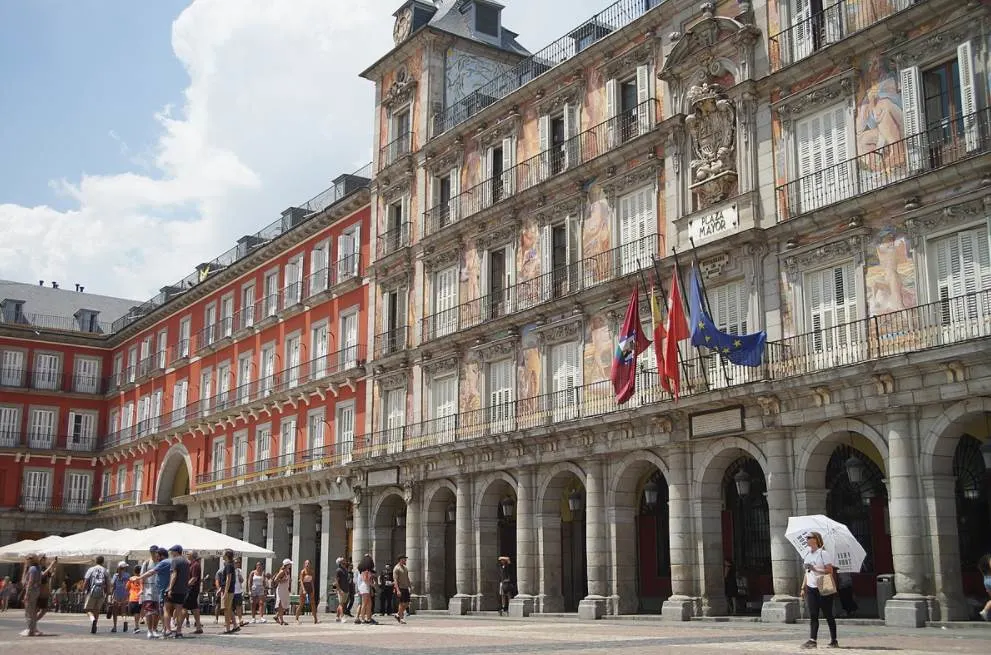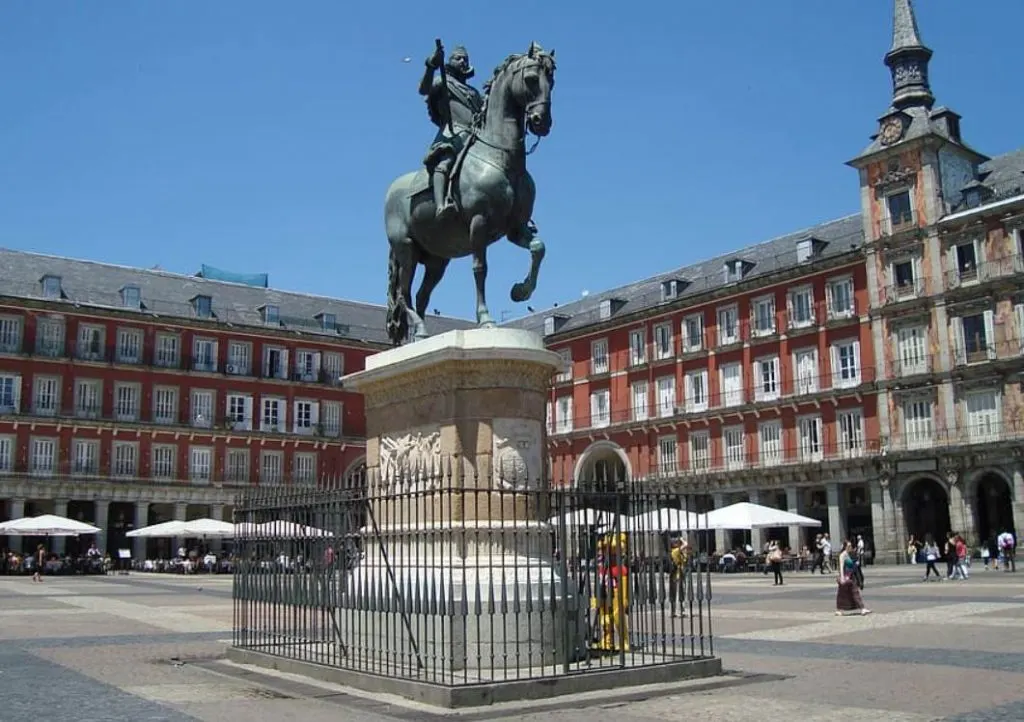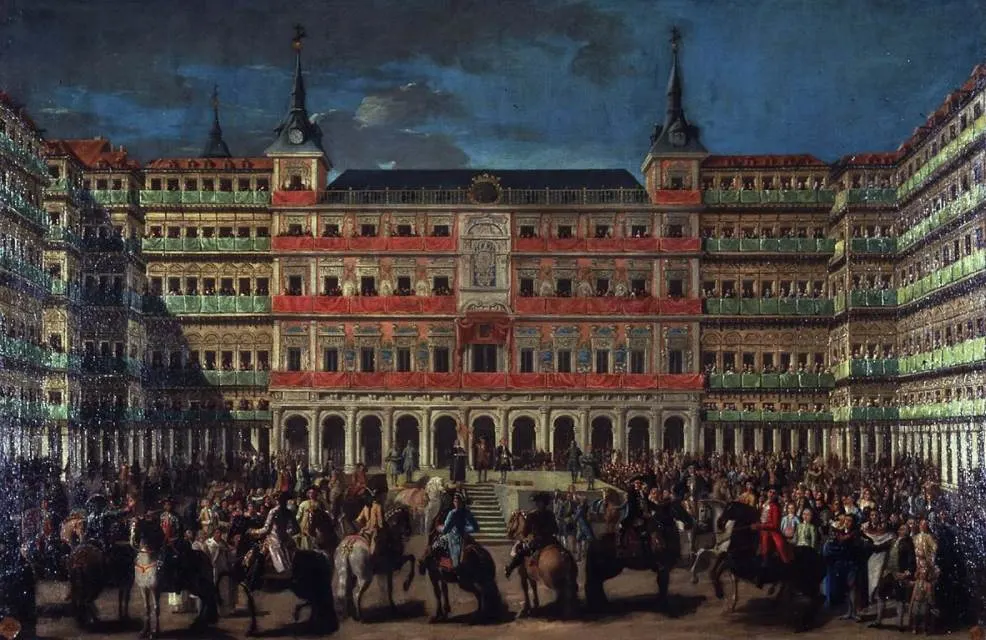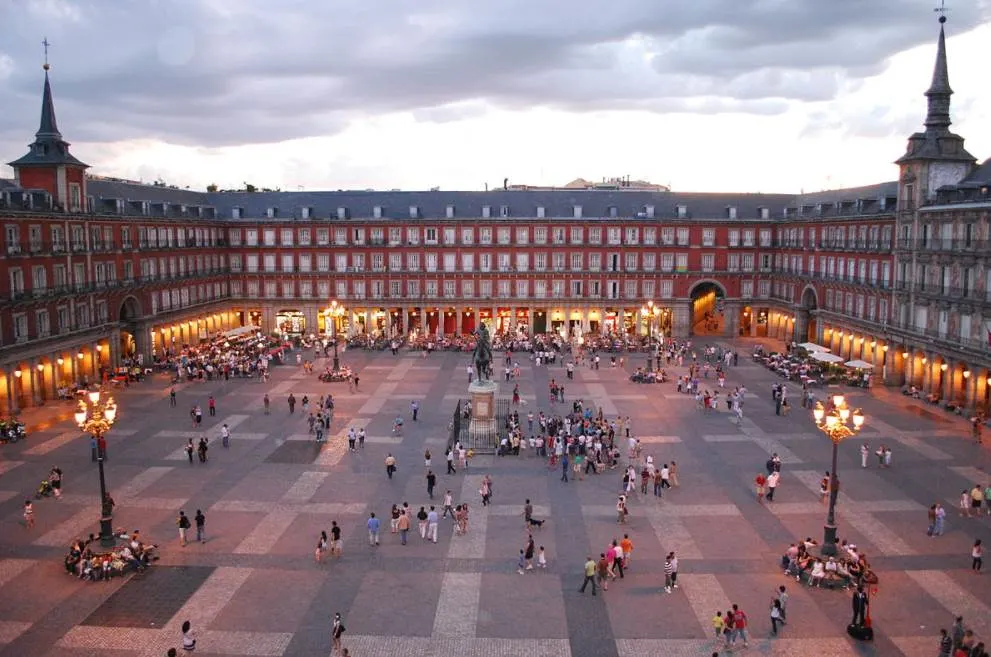One of the main squares in the heart of Madrid is historically one of the most important spots in the city.
Let’s take a closer look at some of the most interesting facts about the Plaza Mayor in Madrid, a public space in Spain’s capital that has some fascinating stories to tell.
1. It’s located in the historical heart of Madrid
The Plaza Mayor translates from Spanish to “Main Square” and is considered to be the historical heart of Madrid. This also means that the square is situated right in the middle of the city center, at walking distance of some of the city’s most popular tourist attractions and landmarks.
The other major square of Madrid called the Puerta del Sol is located just a few hundred meters to the northeast. Further to the east, you can find the Prado Museum, one of the largest and most popular art museums in the world.
At a similar distance to the west, you can also find the amazing Royal Palace of Madrid, one of the largest palaces in the world and the largest in Europe with 3,418 rooms and a floor area of 35,000 square meters (1,450,000 square feet).

2. The original square was the center of Old Madrid
Just like most historic squares in cities all around the world, this one started as the location of the market of Madrid. Its history dates back to the 15th century, a period in which the square was called “Plaza del Arrabal.“
This means that the Plaza Mayor was constructed right in the historical heart of the city. Plans to build a monumental square were already in the making after the square’s ownership came into the hands of the city of Madrid in 1561.
A neoclassical square was commissioned by King Philip II (1527-1598), but the first stone wasn’t laid until 1617 during the reign of his successor, King Philip III (157-1621). It was completed just 2 years later in 1619.
3. The square was rebuilt 3 times throughout its history
Fires were quite a big problem in Madrid because not only the Alcázar burned to the ground on Christmas Eve 1734 (the reason why the Royal Palace was built in the 18th century), but the square suffered the same fate multiple times as well.
The first fire happened just over a decade after the square was completed in 1631, followed by another devastating calamity in 1670. Both times, the square was completely reconstructed.
The final fire destroyed about 30% of the entire square and happened in 1790. Yet again, the square was completely rebuilt but the construction of the magnificent square we see today would ‘t be completed until the year 1854.

4. The square is much larger than it initially looks
Even though this is the main square in Madrid, it doesn’t give you the feeling that it’s huge when you enter it from one of the 10 entrances. That’s mainly because of the uniformity of the buildings that surround it.
Regardless of this initial notion, the square is pretty big. It has dimensions of 129 by 94 meters (423 by 308 feet).
To give some examples of the sizes of other major squares in Europe, the Grand Place in Brussels has dimensions of 68 by 110 meters (223 by 361 feet), and the Place de la Concorde in Paris has dimensions of 359 by 212 meters (1,178 by 696 feet).
5. The 17th-century statue in the center was only placed here in 1848
The center of the square is decorated with a large bronze equestrian statue depicting King Philip III, the man who was in charge of the country while the first stone was laid, and also when the original version of the square was completed in 1619.
One of the most fascinating facts about the Plaza Mayor is that this statue predates the square as it was completed in 1616 by Italian-based Flemish sculptor Jean Boulogne and his assistant Pietro Tacca.
As you might have expected by now, the statue wasn’t intended to decorate the square originally. It was a gift from the Duke of Florence and was located in the Casa de Campo, a large public park in Madrid, until the year 1848.
This was the year that Queen Isabella II (1830-1904) of Spain ordered it to be moved to the heart of Madrid.

More interesting facts about the Plaza Mayor in Madrid
6. The square has gone by a wide variety of names throughout its history. The original square was called “Plaza del Arrabal” but this ended up being changed to “Plaza de la Constitución”, “Plaza Real”, and “Plaza de la República,” depending who was in charge that particular moment.
The current name of the square, Plaza Mayor, dates back to the end of the Spanish Civil War between 1936 and 1939.
7. The buildings of the original square that was completed in the 17th century were higher than the ones we see today. These buildings were 5 stories high as opposed to the 3-story buildings on the square now.

8. Another change made during the final reconstruction phase in the late 18th and 19th centuries was that the corners of the square were closed off. A total of 10 large entrances were integrated for people to access the square, 9 of which had gates.
9. One of the most prominent buildings on the square is the “Casa de la Panadería” or the “Baker’s House.” Even though this building was originally completed in the year 1619, it was rebuilt multiple times because of the many fires.
It’s also one of the few structures on the square that was remodeled following the final reconstruction phase. It was completely renovated in 1880 and features a portico at the ground level and two distinctive towers.
10. Today, the square is used for a wide variety of purposes. It’s not just one of the most popular tourist attractions in the city but also the venue of football games and bullfights.
The best time of the year is to visit the square during the Christmas period as it’s the location of the popular Christmas market.



